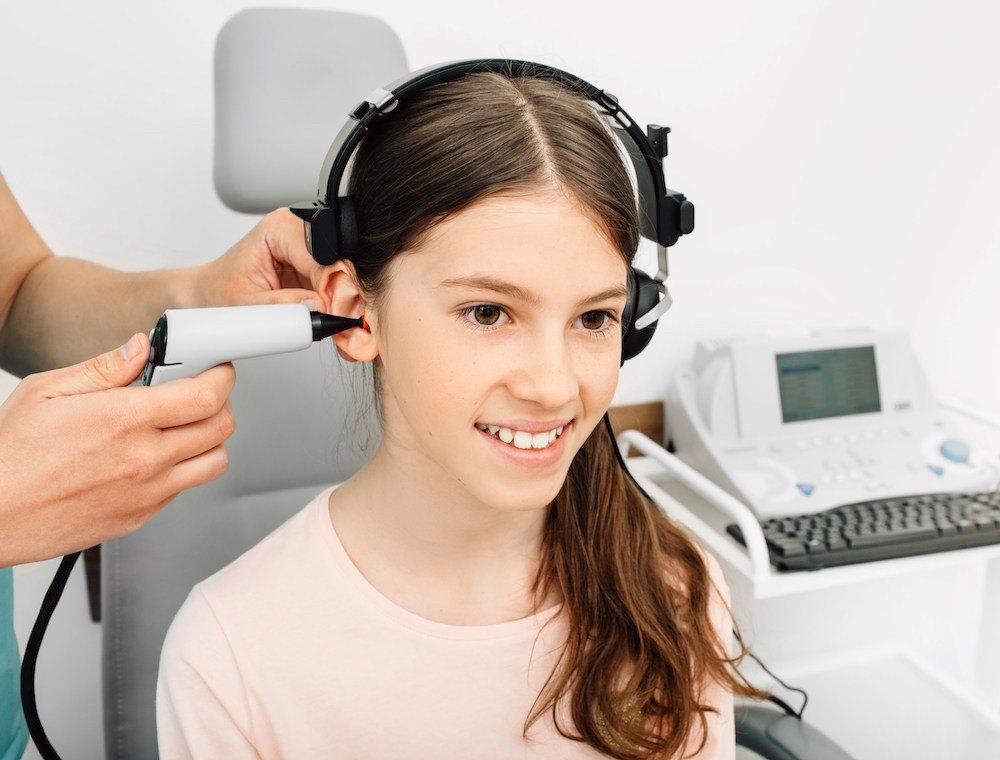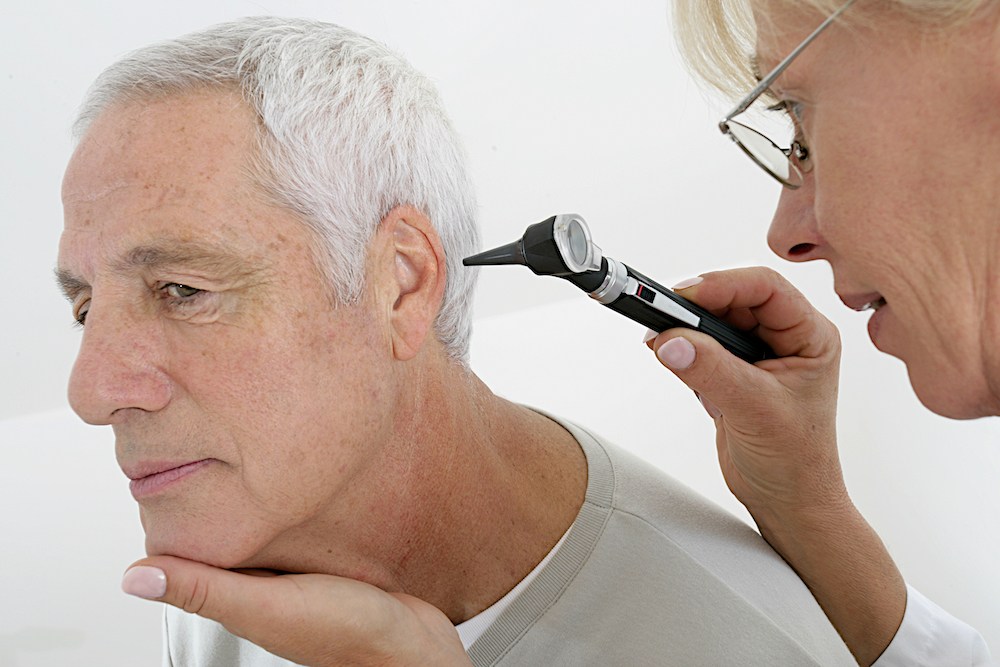How to Advocate for Yourself During a Hearing Test
Being an active participant in your hearing test means more than just
And Jesus said, “He who has ears to hear, let him hear.” MARK 4:9

By: admin | May 31, 2024
Spring is here, and the allure of outdoor activities is stronger than ever. The sounds of birds singing, the wind in the trees and chatter at the park are all part of the experience. But if you use hearing aids, these delightful sounds can sometimes be overwhelming or unclear.
As the season changes, your hearing aids may need a few tweaks to perform at their best. This article will help you with those adjustments, allowing you to fully appreciate the sounds of spring. Let’s dive into the world of hearing aid adjustments and make this spring an unforgettable auditory experience.
Changes in seasons, like the shift into spring, can affect how your hearing aids work. Moving from colder to warmer weather brings changes that are important to understand and adjust for. Humidity is one key factor. Spring often brings increased moisture levels, which can affect your hearing aid’s performance. This moisture can get into the device, possibly causing damage or reducing battery life. Using a dehumidifier for your hearing aids at night can help with this.
Seasonal allergies can also affect your hearing health. If you’re prone to allergies, you may experience ear congestion, which might change how you perceive sounds. Regular use of allergy medication and routine cleaning of your hearing aids can help manage this during the season.
Modern hearing aids can be adjusted for different environments. Whether you’re hiking in the woods or having a picnic in the park, your hearing aid settings can be tailored to help you hear the sounds of nature more clearly. A study showed that 91% of users reported improved quality of life when they adjusted their hearing aids according to their environment.
First, as we transition into spring, our surroundings become more vibrant with sounds. This may require a reprogramming of your hearing aids. Many modern devices offer specific programs for different listening situations. Whether you’re listening to the gentle hum of bees or the distant rustling of leaves, adjusting your hearing aid’s settings can help enhance these sounds.
Second, consider investing in protective gear for your hearing aids. Springtime activities often involve exposure to elements like wind and rain, which can potentially harm your device. Protective covers and sweat-resistant sleeves can shield your device from these elements while ensuring optimal performance.
Taking time to adjust and protect your hearing aids this spring will not only enhance your outdoor experiences but also prolong the lifespan of your device.
As you spend more time outside, you may encounter some common challenges with your hearing aids. These could range from dealing with excessive wind noise to the discomfort of wearing them under a hat or helmet. But don’t worry! With a little bit of knowledge and some handy tips, these issues can be easily managed.
Here are a few strategies to help you overcome these outdoor hearing aid challenges:
Wind noise can impact your hearing aids when you’re out enjoying the spring breeze. Wind blowing across the microphones of your hearing aids can create an annoying rustling sound, interfering with your ability to hear clearly.
This is known as ‘wind noise,’ and it can significantly affect the performance of your hearing aids. It might make it difficult for you to enjoy outdoor activities or have conversations in windy conditions. This is because the wind noise often drowns out other sounds, making them hard to distinguish.
Fortunately, there’s a solution to this issue. Many modern hearing aids come with a feature called ‘wind noise reduction.’ This technology works by reducing the amplification in the frequencies where wind noise is most prominent, thus minimizing its impact. By enabling this feature on your device, you can enjoy your outdoor adventures without worrying about wind interference. So, next time you step outside on a breezy day, adjust your hearing aid settings accordingly for an optimal listening experience.
The arrival of spring often brings with it increased humidity and the chance of rain. These elements can have a direct impact on your hearing aids, so it’s important to understand how to handle these situations.
Increased humidity can cause moisture to build up in your hearing devices, which may lead to malfunction or reduced battery life. Similarly, exposure to rain can potentially damage your device. Therefore, it’s important that you take measures to protect your hearing aids from these conditions.
Understanding how weather conditions like humidity and rain affect your device will help you keep them functioning optimally. By taking the right precautions, you can ensure that nothing stands in the way of your springtime auditory experiences.
As you gear up for spring activities, there might be times when the sounds around you seem excessively loud. This is known as over-amplification and can occur when your hearing aids amplify sounds more than necessary.
Adjusting your hearing aids can help manage this issue effectively. Most modern devices come with volume controls that allow you to lower the sound level when needed. It’s about finding a balance where sounds are not too loud, but still clear and distinct.
Also, consider consulting with your audiologist about this issue. They can guide you on how to make appropriate adjustments or even reprogram your device if necessary. With these steps, over-amplification won’t stand in the way of enjoying spring’s vibrant soundscape to its fullest!
When it comes to adjusting your hearing aids, you might be wondering whether to seek professional help or attempt the tweaks yourself. This decision can significantly impact your overall auditory experience during spring.
While DIY adjustments can offer immediate relief, seeking assistance from an audiologist ensures precise and effective alterations. They possess the expertise to fine-tune your device according to your specific needs and the changing seasonal demands.
Fine-tuning your hearing aids at home is simpler than you might think. With a few easy steps, you can optimize your devices to better match the lively sounds of spring. Here are some actionable tips that can guide you through this process.
Fine-tuning your hearing aids doesn’t have to be daunting task. With a little bit of knowledge and practice, you’ll soon be enjoying all the wonderful sounds that spring has to offer!
As you continue to enjoy the outdoors this spring, it’s worth noting that your hearing aids come with special features designed to enhance your listening experience. These features can be adjusted to better suit the outdoor environment, allowing you to fully appreciate the sounds of nature.
One such feature is directional microphones. This technology helps you focus on sounds coming from a specific direction while reducing background noise. If you’re having a conversation at a busy park or listening to birds chirping in your garden, activating this feature can help clarify these sounds.
Another useful feature is telecoil. This technology picks up magnetic signals instead of sound waves, providing clearer sound in certain environments. Many outdoor venues like amphitheaters or sports stadiums are equipped with loop systems that work with telecoil, offering an improved listening experience during outdoor events. Leveraging these special features on your hearing aids can significantly enhance your outdoor listening experiences.
As we transition into spring, it’s essential to not only adjust your hearing aids but also to maintain them properly. This ensures their longevity and optimal performance throughout the season. Here are some routine care tips that can help you achieve this.
Regular cleaning of your hearing aids is important. Daily wiping with a soft, dry cloth can remove any dirt or moisture that may have accumulated. Remember to clean the microphone and receiver gently to avoid damaging these sensitive parts.
Storing your hearing aids in a safe place when not in use can protect them from potential damage. A dry storage box is an ideal choice as it protects the device from humidity and other harmful elements.
As we continue to enjoy the arrival of spring, it’s important to make sure our hearing aids are working at their best. One challenge you might face is understanding which adjustments are necessary and how to apply them effectively. Consulting with your audiologist can provide expert advice tailored specifically to your needs and ensure that your device settings are optimized for the changing seasonal soundscape. With these adjustments, you’ll be well-prepared to enjoy all the beautiful sounds that spring has to offer!
As you continue to immerse yourself in the sounds of spring, remember that Trinity Hearing Care is always here to help. Our audiologists can guide you through any necessary adjustments to your hearing aids, ensuring optimal performance and clarity. By tailoring your device settings to match the lively soundscape of spring, we can enhance your outdoor experiences and ensure you don’t miss a single note.
If you’re in Hicksville, Ohio or surrounding areas and need assistance with adjusting your hearing aids for springtime activities or have any other concerns about your hearing health, feel free to contact us at (419) 416-6141. We are dedicated to helping you explore the world of sound with ease and confidence.
Enjoy the outdoors this spring with perfectly adjusted hearing aids – because every sound matters!
Tags: benefits of hearing aids, hearing aid repair, hearing aid styles

Being an active participant in your hearing test means more than just
By: admin | November 18, 2025

Feeling nervous before a hearing test is very common. Many people have
By: admin | September 24, 2025

Our hearing plays a vital role in how we communicate, work and enjoy
By: admin | May 23, 2025
